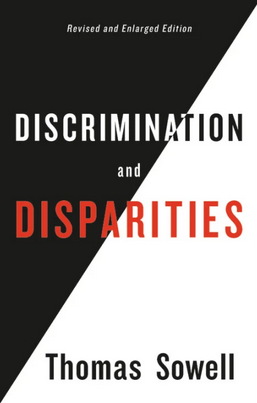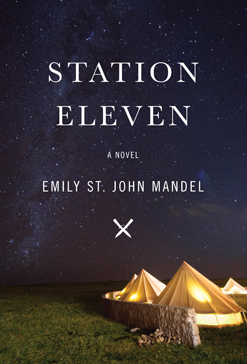by Christopher Ervin
When I learned I would be a graduate teaching assistant during the second year of my MA program, I began observing my course professors, often noting strategies to emulate but sometimes practices to guard against. I don’t remember exactly what I observed, but I suspect a kindly literature professor reading directly from lecture notes landed on the “don’t” list. And seeing the impact of our facilitator calling on us by name and asking prompting, open questions, found its way to the “do this” list. Those early memories of learning how to teach from their examples have faded, but I absolutely know that talking to them about their teaching was not part of my process. I never scheduled any formal observations or requested follow-up conversations with my professors about why they were doing the things I observed. So, rather than hearing from them about their teaching, I took from those observations my own interpretations of their teaching styles, which I then placed within the context of what I anticipated my approach would be.
In the years since, I’ve had the opportunity to observe hundreds of graduate teaching assistants, writing consultants, peers, and mentors in both formal and informal contexts. I’ve also been observed (formally) dozens of times as a teacher and facilitator. In all my experiences observing and being observed, I’ve found the conversations, before and after, to be the cornerstone of a successful observation experience.
The Conversation Before
The conversation before an observation might be brief, but it’s no less important than the follow-up. The conversation preceding the observation serves several purposes, but overall, the first conversation, combined with the follow-up, wraps the observation in what I hope is a positive and caring interaction.
I have four goals for those initial conversations. First, I hope to learn what the person I’m observing would like me to focus my attention on during the observation. Organization of material? Clarity of explanation? Facilitation of group discussion? Interaction with participants, or interaction between participants? I lead the initial conversation with this goal-setting process, which also helps to empower and center the person I’m observing, and to dismantle some of the power dynamic inherent in an observation.
Second, I want to be sure the person I’m observing understands my process. Since I take copious notes, I want them to know that in advance. This is also when I tell them whether I’ll be taking notes on a laptop or tablet because I hope to avoid the impression that I am disengaged or multitasking. (It’s also when I invite them to share their preference with me—if they prefer I take handwritten notes, they can tell me then.) I also share the evaluation form/rubric if I’ll be using one (for evaluative observations, there’s usually some kind of university/department-mandated form).
Additionally, I hope the person I’m observing leaves the initial meeting knowing how the observation is going to be used. In some contexts, it’s clear (tenure file, for example). Elsewhere, the person being observed might know only that they’re being required to have an observation of their class/meeting, etc.—for example, when I observe faculty/staff I supervise as part of the evaluation process. In that case, they might not be sure who will have access to that observation report (if there is a formal report), how it might be used, and where it will “live” after the observation. Likewise, I ask them how they plan to use the report I share with them (teaching portfolio, for example) so that I have an opportunity to write a report that works for their purposes.
Finally, I do my best to be sure we both leave the meeting feeling excited—or at least not anxious—about the upcoming observation. Some of us dread being observed, and that anxiety can shape the class, meeting, etc. Strategically nudging the power balance back toward the person I’m observing—to the degree that such a shift can happen—by centering their goals and self-identified growth areas goes a long way to help them anticipate a productive and valuable experience. In the end, I hope the initial conversation clears away some of the anxiety and sets the person I’m observing up for a really successful class, meeting, etc.
The Follow-Up Conversation
The follow-up conversation is typically what one might think of in the context of an observation. My approach is to reserve most of the time during the conversation for the person I’ve observed, giving them space to make meaning for themselves while I act as a sounding board for that meaning-making. As with the conversation before the observation, I enter the follow-up with a few specific goals.
First, I want to share what I noticed based on their self-identified goals. If they asked me to pay attention to how their students were interacting, I’ll have drawn a discussion map that shows who was speaking, and to whom, and how often. If they wanted me to focus my attention on a new approach to small-group work, I will have taken copious notes based on what I hear and see in the small groups. I consider this part a reflecting-back process, like I am a mirror they’ve been able to hold up to their teaching.
Second, I always offer genuine, specific praise and validation and talk about why I felt a particular approach or activity worked well. The value of praise can’t be understated. It not only confirms for the person being observed what they hope is working well, but it also often identifies for them approaches or strategies they might not have noticed about themselves.
Third, I hope to contribute some interpretation or additional meaning making about the class, meeting, etc. Non-judgmental question-asking serves as the cornerstone of this part of the follow-up conversation, but direct observations and notes are interspersed. If the initial conversation served its purpose, my direct observations during the follow-up should land well.
Ultimately, the conversation will be shaped by the relationship I have with the person being observed—if I am their supervisor, we might find opportunity to talk through a couple of specific approaches or behaviors that don’t align with the expectations of the position. If I am not their supervisor, we might focus primarily on formative types of evaluative suggestions, like when a faculty member is interested in hearing my perspective about how their discussion prompts landed with their students.
Remembering that Observations Enact Actual and Perceived Power Dynamics
Even with the most productive of conversations before and after the observation, I remain keenly aware that an existing power structure determines who is observed, who gets to observe, why they observe, in what context someone is observed, and what implications might arise from the observation. The fact that a faculty member or staff might invite a colleague or supervisor to observe them doesn’t erase the power dynamic between those individuals. Imagine the scenario in which a department head is applying for promotion to full professor and needs to be observed by faculty they supervise—just one example of how complex the power dynamic can become when we are invited to make formally observe others.







